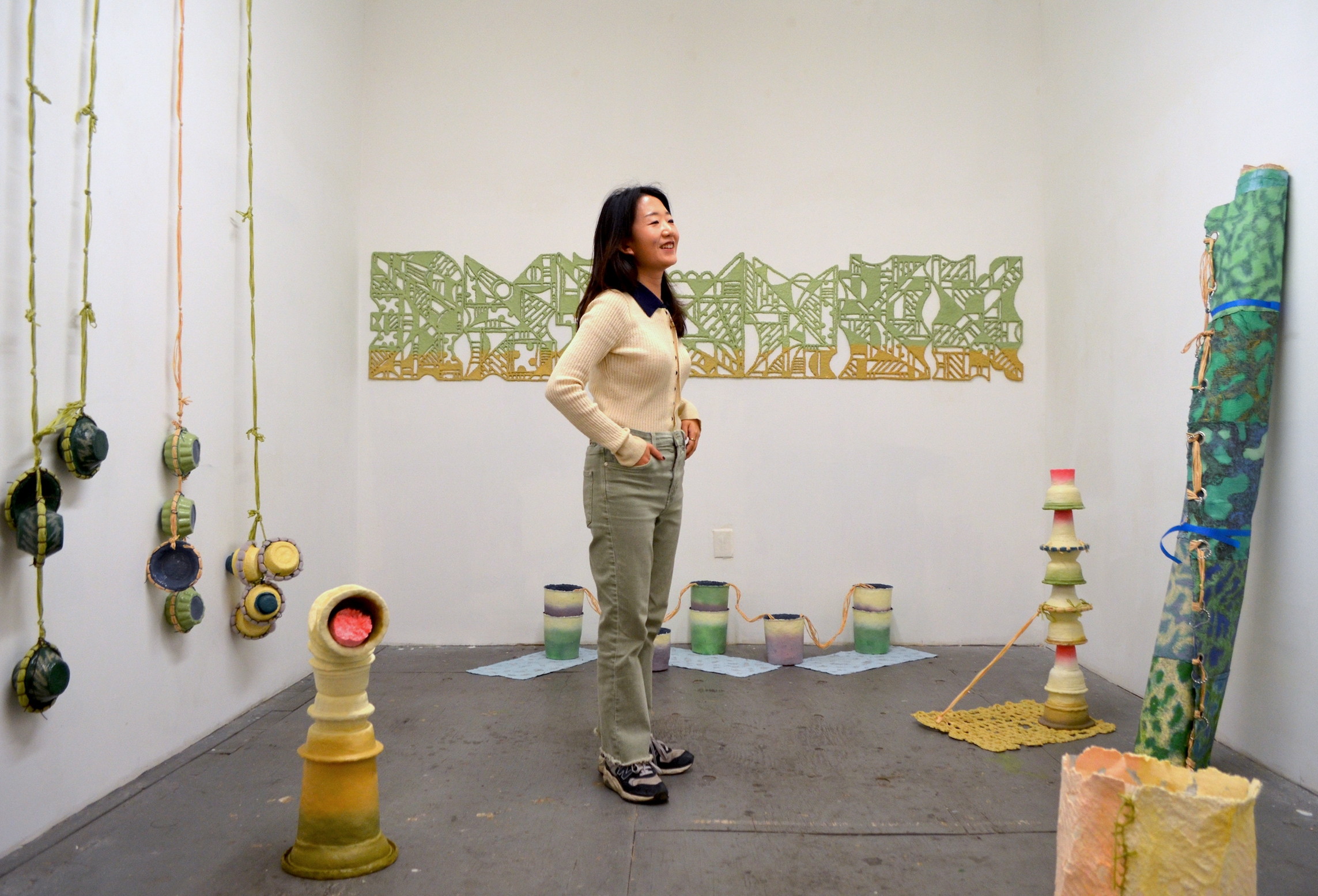This year’s Sunset Park Open Studios (SPOS) was much like an adult trick-or-treat for the art curious, complete with a map of more than 10 locations where an estimated more than 300 artists opened their spaces to the public.
“A lot of artists came down [here] from Bushwick,” Junho Lee, the founder and director of the New York Artists Residency and Studios (NARS) Foundation, explained to Hyperallergic. “So I thought it was a good moment to open them up to the community.”
Established in 2019 and led by NARS, the annual event provides a glimpse into the South Brooklyn neighborhood’s emergence as a bustling arts district as other areas become too expensive for some artists to sustain a practice. This year’s edition ran from October 18 to 20 and included NARS spaces and performances as well as the adjoining J&M Studios, ArtBuilt at Brooklyn Army Terminal, BioBAT Art Space, and a short film screening at the office of New York City Council Member Alexa Avilés.

At the NARS headquarters, 13 resident artists displayed their works and Curatorial Fellow Dylan Seh-Jin Kim organized a collaborative performance series fittingly titled 3 Studios. In one performance, “Walking, Waiting, Writing, With Rocks,” Greek artist Lafina Eptaminitaki moved a pile of 1,410 Caribbean beach pebbles, one by one, across an empty studio space. Eptaminitaki told Hyperallergic the piece was to unfold across the three days and explore “time, labor, and the relationship between displacement and discourse through material and movement.”
Across the hall, Judy Giera reified feminist vagina art through what she described as a “’90s, Lisa Frank, fluorescent material lens” in a medium “between painting and sculpture” that pops off the walls.
“I love talking about my work, and I love meeting people,” Giera said. “This is always such a sacred space, but it’s a space I’m alone in a lot. Bringing people in is a nice reminder that art is a talking point and a way to connect and move beyond yourself.”

Artist Niamul Bari, who rents a space from the nearby J&M Studios, chronicles his emotions in wax and thick oil paintings with marble, sawdust, and pigment. One of the works in his studio, he said, incorporates Bangladeshi architecture with the textures of New York City streets. Having trained in ceramics in his home country of Bangladesh, in sculpture in India, and in painting in the United States, Bari leaves his multimedia works untitled to avoid forcing viewers into a particular interpretation.
“I prefer people to find something from my work,” he commented.
While Bari’s job in food service keeps him from spending more time in his space at J&M, he looks forward to the sense of community and curiosity that Open Studios cultivates. Visitors come to experience “the process of this world,” as he put it.
Amid the maze of studios, NARS artist-in-residence Jeehee Yoo’s gentle paper sculptures and matching outfit stood out. Yoo, who studied art in South Korea, uses paper, pastels, and recycled materials to create what she calls “tension and release.”
“I learned that the negative space is so important in your art practice because it’s about future manifestation,” Yee told Hyperallergic. “So I wanted to bring that philosophy into my installation and sculpture … it’s like a balance of yin and yang.”

In another room, resident artist Jieun Lim presented a carefully arranged desk, mattress, and suitcase beside an Amazon box full of tiny model elephants. The installation, Dylan Seh-Jin Kim explained, was a glimpse into Lim’s process of assemblage. Lim told Hyperallergic that some of the artifacts, like the boxes, were culled from her recent move to New York from Germany for the NARS residency.
A decent walk away in the ArtBuilt studios, which provide affordable space for artists and creatives, Meerkat Media Collective opened its edit bays to the public and played short art films on a loop. A tenant since 2018, the film production company comprises around 20 team members whose work includes Emergent Cities (2024), which documents climate racism and gentrification in Sunset Park.
Filmmaker and collective member Jay Arthur Sterrenberg told Hyperallergic that the company has prioritized becoming a more “permeable” organization over the last few years, following the artistic isolation brought on by the COVID-19 pandemic.
“We want to be part of folks flowing through here more and having opportunities to be more connected to our neighborhood in Sunset Park,” Sterrenberg said.




